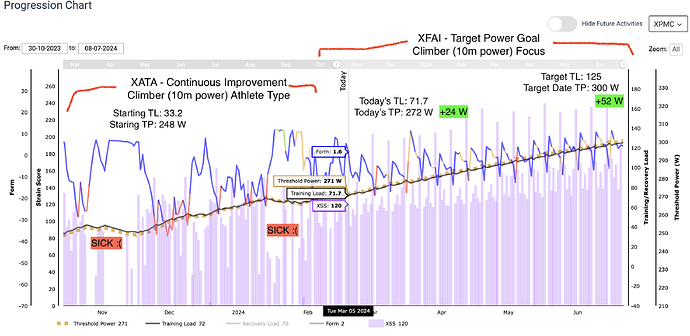Hey folks.
I’m nearly at the end of my trial period and working out if this is a platform to pay for (just a pragmatic decision making process for me - nothing personal etc etc etc)
I came in to the trial not being too sure about what the key events are, hence the trial.
I know I am looking for:
Simple chart of training stress/summary for ‘form’ (even though training stress and form are often judged best by knowing one’s body, I like it)
Simple charts of peak power at various timeframes (eg 1min, 2min, 3min, 5,20,20 etc - ideally configurable to my own durations - this is to allow me to compare progress on specific workouts
Same for HR
The ability to plan for the next few months dynamically (as I was aware that was a differentiator) and that might be the main difference.
Then anything else that helps me understand progress, useful for training in the next year.
The training stress chart is there so that’s cool.
I haven’t found a simple way of extracting power and hr per duration/configuring duration. I know there’s a chart but I literally have to start moving a mouse around to get each bit of data bit by bit on that - bit slow.
Planning is work in progress. There are some oddities about breakthroughs that I often think - ‘great something’s gone well’ and then I look at the report and yeah, not really ![]() so still working on how to use the planner.
so still working on how to use the planner.
I tend to set it to 12 hours and then get told a few days later I need to do 17 hours a week for the next 2 months, so that’s a bit odd so far but presumably something to do with me not being a full time rider maybe.
Other things I’ve been looking at. MPA is a number but it’s just that (so far). It’s certainly a fact that the more above threshold we go, the harder it is to maintain that until the lines cross but it’s just a number (or am I being daft).
What else have I not used so far that I’m missing?
You folks will all know better than me I suspect !

